
We’ve been talking about digital transformation as an industry for more than 10 years, and it’s given us the technology to be much more efficient with our time and budget to grow.
And we’ve also learned that the best-performing campaigns come from data. So to make good marketing decisions, you first need to ensure you have a strong database to pull from.
But…your database probably looks like this:
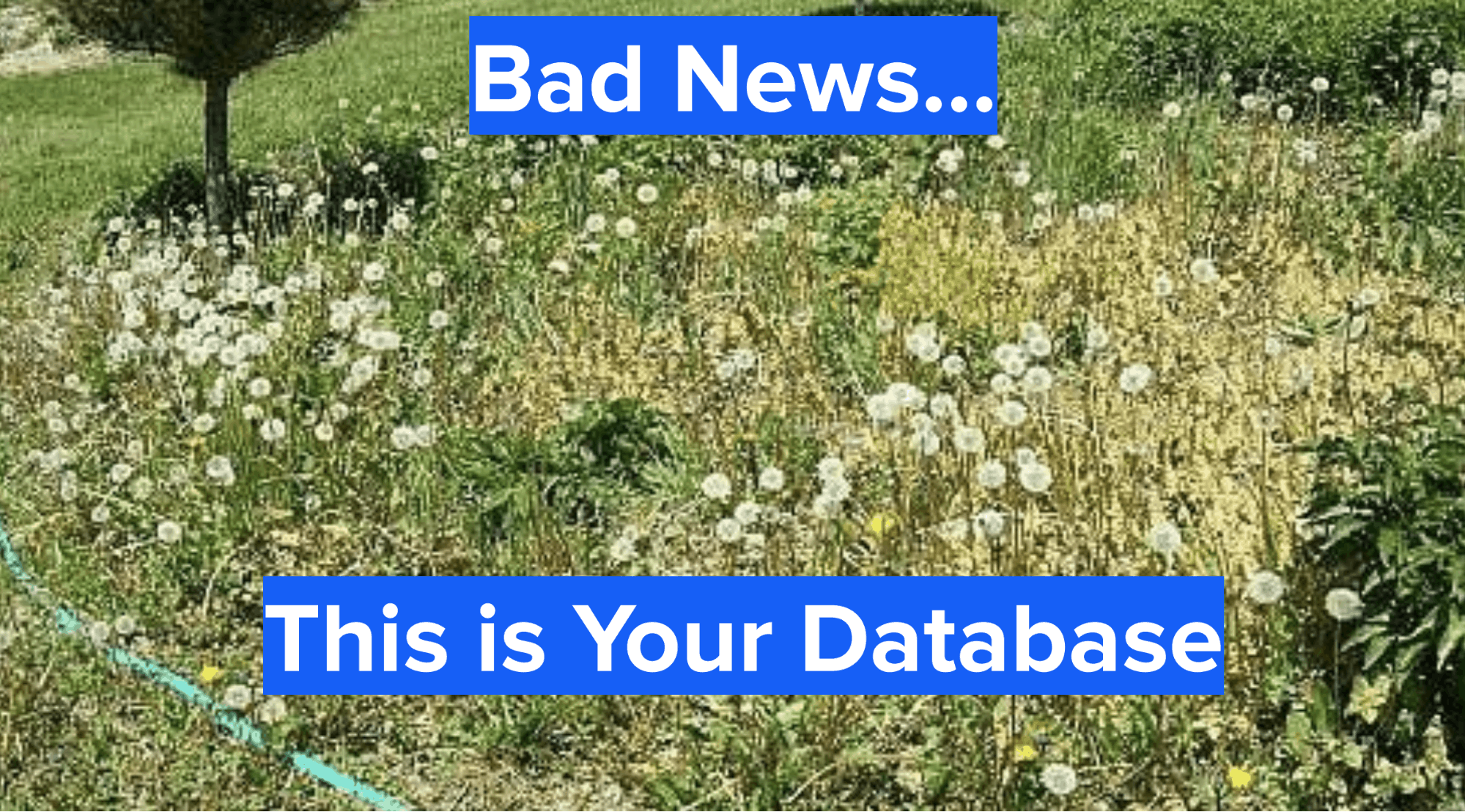
☝ That’s your database, and it’s full of…weeds and dead bulbs. I don’t know a ton about gardening, but I do know that’s not good. We learned from Informatica that as much as 30% of your data decays every year.
30% feels outrageous.
But if you break it down, it’s a little bit over 2% a month. Suddenly, that’s a lot more reasonable.
Companies are merging, acquiring, folding, and getting funding faster than ever. You probably send emails to tens of thousands or hundreds of thousands or even millions of businesses. We can’t expect our lists to stay the same forever.
Your database is in a constant state of decay, and that decay has a real business cost. Our friends at Eloqua found that if you spend $1 on a record upfront, but that record is bad (they’re no longer at that company or the email bounces, for example), it ends up costing $11 downstream ?
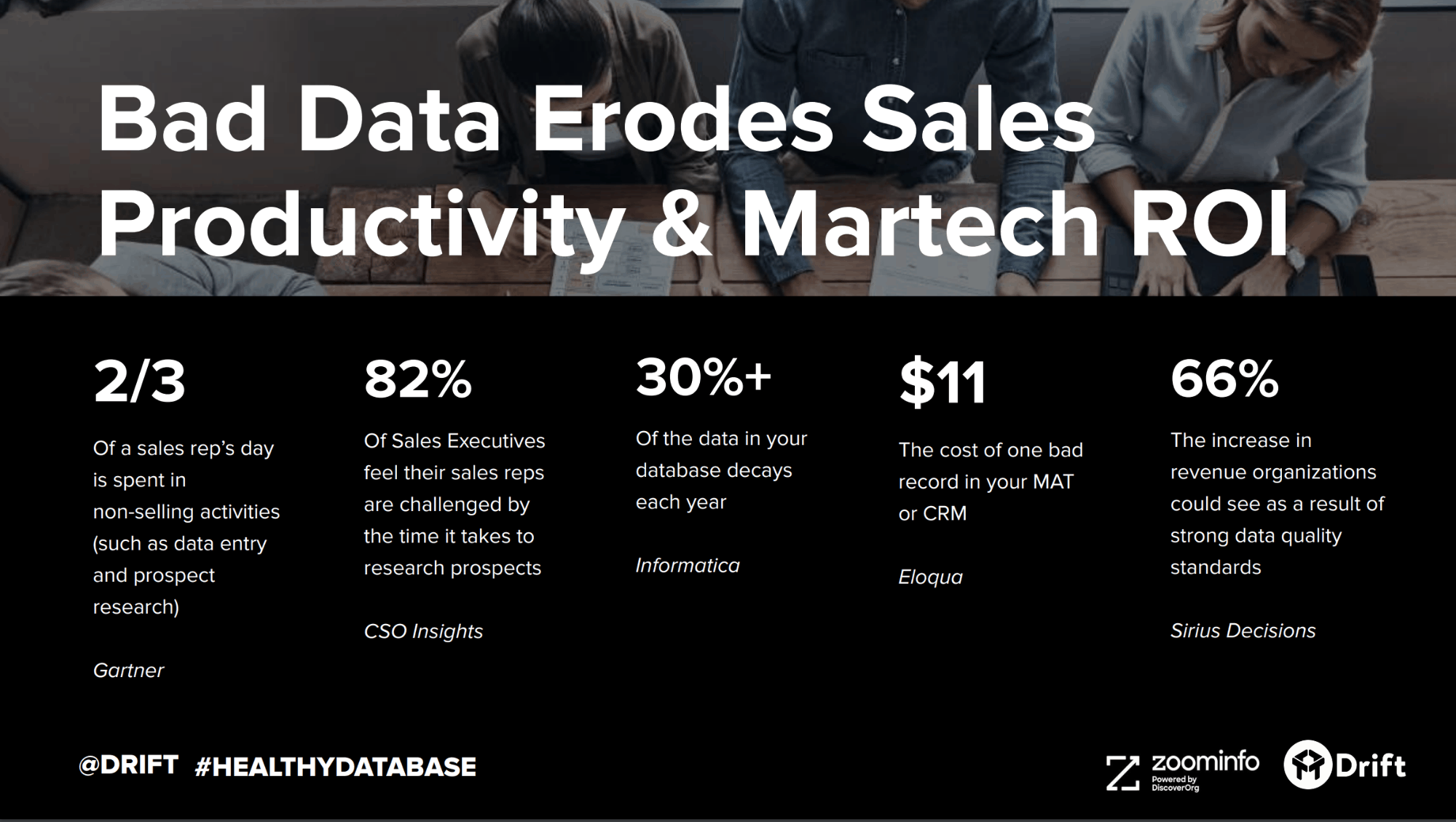
And that doesn’t include the cost of sending un-optimized campaigns. Buyers today want a more personalized experience that shows you know something about them and that you’re worth their time, and data is the way to make that happen.
Your reps also don’t want to waste time chasing down that outdated record. Gartner found that ⅔ of a sales rep’s day is spent in non-selling activities. So when you think about your reps that are hitting that $1 million quota – imagine what they could do if they were giving all of their energy toward active leads with the right contact information.
4 (More) Reasons Why A Healthy Database Matters
Okay, I got your attention with bad data and some scary ROI numbers. But wait, there’s more. Let’s break it down with a few other reasons why you should care.
1. Campaign Performance
Here’s the truth: The size of your database doesn’t matter. The quality of it does. So before you get excited about millions of contacts, think instead about your performance. If you’ve sent 20 emails to someone and they don’t ever open them, who cares?
You won’t be able to run a high-performing campaign unless you have a clean database.
Take a classic ABM campaign for example. I did a webinar with another company last week and they said, “Hey, we sent out these Yeti mugs.” People love free stuff.
But that’s at least $30 in a box, and if you’re sending them to people who are no longer at the organization, or have a different role now, or their office moved, or they don’t work at the location you thought they did – now you’re just throwing money out the window.
2. Deliverability
Second, your email campaigns won’t be read if they’re not delivered. There are more than 7,500 MarTech vendors in the space today, all with different pricing models, and most of them charge you based on storage.
If you can’t deliver to an email address, it’s trash. So don’t pay big bucks to store a bunch of junk. I’ll say it again: It’s not about how big your database is – it’s how active, engaged, and valuable it is for your business.
Email marketers need to partner with marketing operations to develop a system for regularly removing invalid, unsubscribed, and other outdated contacts from their marketing automation platform. There are database hygiene tools that can help automate this.
3. Privacy & Data Compliance
A healthy database allows you to identify the location of your contacts.
GDPR is something marketers have had to deal with for a while now, but now that CCPA is in effect and other privacy regulations are on the way, it’s more important than ever to make sure your database is compliant – otherwise, you’re risking some hefty fines.
That’s because the laws don’t apply to where your company is based, but where your audience is – so you’ll need to make sure you have a plan in place to address the laws of each of your markets.
A healthy database enables you to ensure you’re collecting permission-based data, and understand how to update or delete contact records if someone wants to be taken out of your system. This, in turn, also makes unsubscribing people the first time around a lot easier.
4. The Sales-Marketing Relationship
The key word for any relationship is “trust.”
Sales needs to have confidence that marketing can deliver real results and real leads. And if marketing can’t trust that sales is adding valuable data that can help them run better campaigns, it’s going to add friction into that relationship.
Often, when you see breakdowns between the sales and marketing teams, it starts from small data discrepancies that wear down trust and snowball into bigger issues that can derail the entire go-to-market engine.
5 Tips You Can Implement Right Now For Business Impact
Now that you understand the why behind building a healthy database, let’s move on to the how. The opportunities are endless if you can weed your garden (now I’m really committed to the analogy). But it can seem daunting if you don’t know where to begin. Here are five things you can do to get started:
1. Segment Based on Engagement
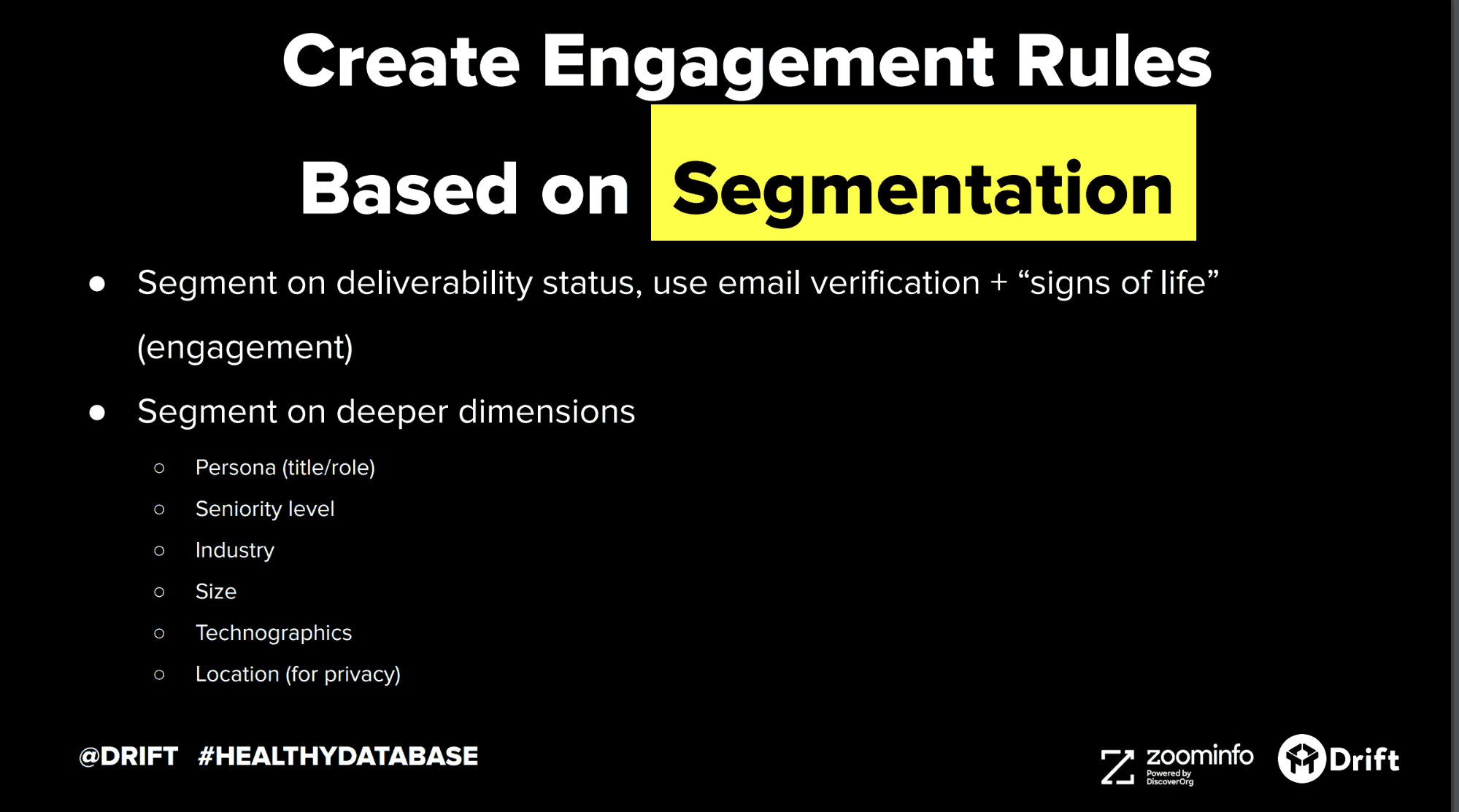
First, start segmenting your email list based on email verification status. That goes beyond removing invalid emails – it means researching existing contacts to find what Patrick Purvis from ZoomInfo calls “a sign of life.” Because there’s no point in emailing someone 20 times if they’ve bounced or never opened what you’ve sent them. Otherwise, you risk a vicious deliverability cycle.
I repeat: If your emails are invalid or caught in someone’s spam filter, you’re definitely not going to get a conversion from them.
I can look in my spam folder right now and there are a fair amount of reputable companies that I recognize. Are you in the spam folder, too?
Then, go deeper.
Experiment with segmenting by:
- Persona
- Seniority level
- Industry
- Size
- Technographics
- Location
And see how many more conversations you open up.
2. Merge Duplicates
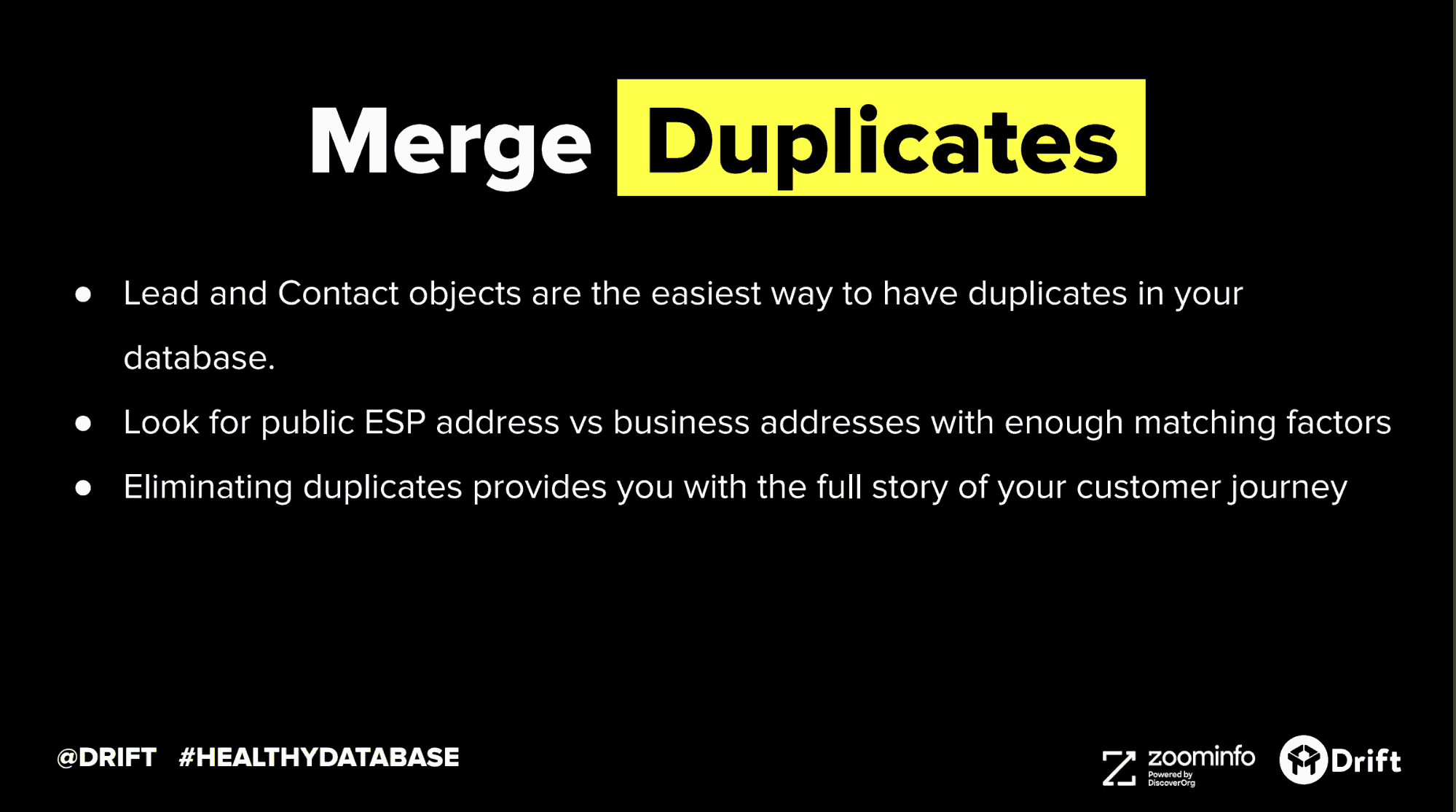
The customer journey doesn’t end when your prospect heads home from work. I might be on my personal home computer or on my iPad, where you might pick me up as my personal email or my work email (which are both very similar). Knowing that I’m the same person will help you figure out how I first joined your list and also give you the full picture of where I am in the funnel.
Or say your prospect has several aliases under their work domain – a tool like Drift Email helps you merge those contacts together into one profile.
There’s a privacy dimension to this, too. Odds are, you have prospects that made it into your system more than once. When someone unsubscribes, they unsubscribe as a person, not as an email address. You’ll need to find the people, not just the records.
3. Enrich Existing Records
Whether you have 10,000 or 100,000 people in your database, try to make each record as complete as possible so you can better segment and tailor your message – and stay compliant with privacy laws. This enables hyper-personalization at scale.
You’ll also want to normalize the data in each field. Create guidelines for how reps should add and format new data they collect after their conversations, and workflows to automatically update fields into the same format. This eliminates anomalies and makes reporting a breeze.
Get a tool to grab contacts & activities out of your reps inboxes: Don’t leave data entry up to your sales reps. There are plenty of tools out there that can help you maximize efficiency and decrease errors.
4. Set A Trustworthy Source For Net New Records
To help you scale your database, you’ll need to set a source of truth for all new information and records.
Start by making a list of all the tools in your tech stack, and determining which systems receive data. If you’re compliant with GDPR, there’s a good chance your legal team already has this list. What integrations or other work will you need to do to make sure there’s one source of truth?
Once that’s determined, you can automate data input so you’re able to add the right new contacts into your database, and keep important information like location and job title up to date.
5. Verify (And Then Do It Again)
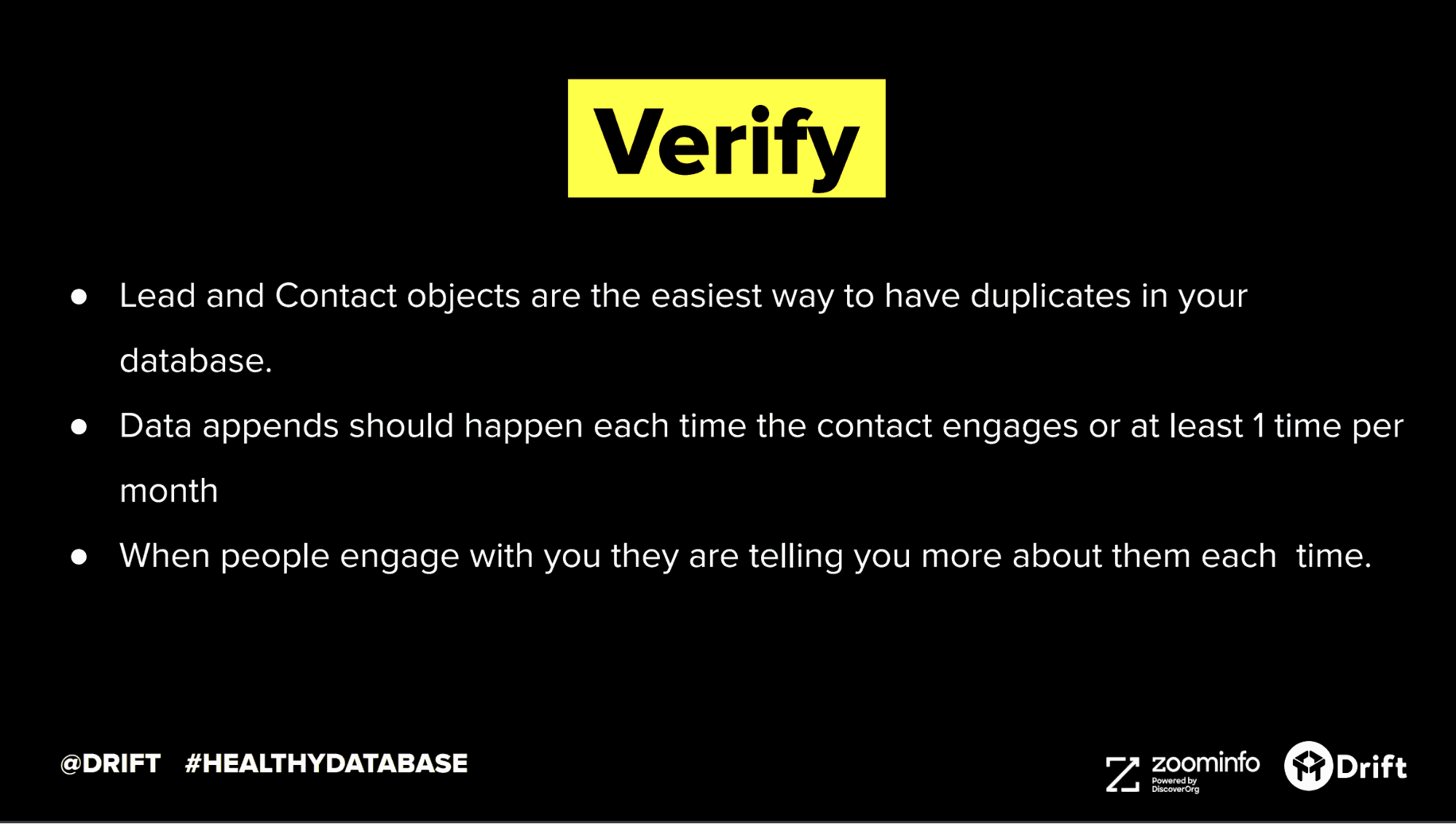
Keeping your database healthy isn’t a one-and-done activity. Schedule regular verification updates for your database – at least monthly – and before any large send.
Think about, “Do I have ways and mechanisms set up to re-validate and re-verify this information regularly and frequently?” The world’s moving in real-time, and you don’t want your database to be left behind.
Every time someone engages with you, they’re telling you more about them and what they care about. It’s a conversation that spans multiple touchpoints, and regularly updating their record with the most recent information makes sure you’re always delivering value to your subscribers. You don’t have to inundate them with the same message each time.Bonus: You can also use this information to create a personalized web experience that mirrors where they are in the buyer’s journey and in the funnel.
Now I’ve been doing this marketing thing for over 15 years. I am a BIG data geek – those who know me well agree – so I was psyched to spend some time nerding out with Patrick Purvis, SVP of Revenue at ZoomInfo, allllll about it.
And guess what? This blog post just scratches the surface of what Patrick and I talked about ?






